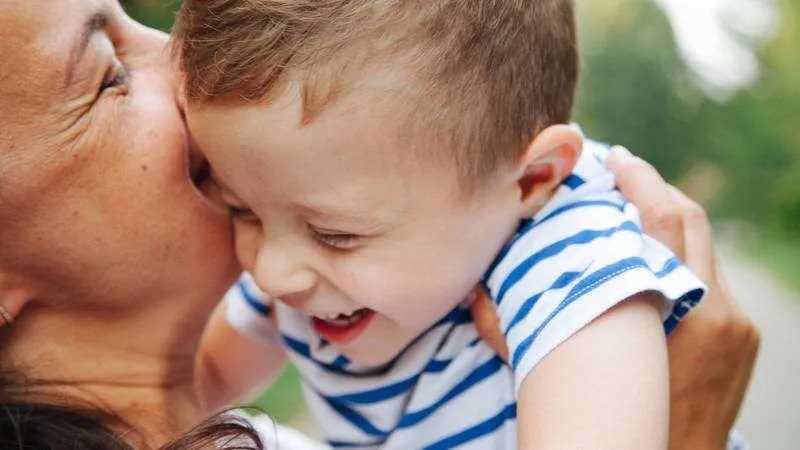

- By Ashley Cullins
Model empathy.
Any time you want to teach a skill to a child, it’s important to model it yourself. This way, the child understands what empathy looks like, sounds like, and feels like. Plus, it’s easier to teach a skill that you’ve already mastered yourself.
Remember to model empathy even when you’re upset with or giving consequences to your child. This reinforces the idea that empathy can and should be used even when you’re feeling disappointed, hurt, or angry.
The more children receive empathy, the more likely they are to offer it to others.
Discuss emotions.
Talk openly about emotions rather than dismissing or burying them. Let’s say your child is scared of the dark. Instead of saying, “There’s nothing to be afraid of,” explore the child’s feelings: “Are you scared of the dark? What scares you about the dark?”
If your child doesn’t like another child, don’t immediately say, “That’s wrong,” but ask why the child feels that way. This can lead to a discussion about the other child’s actions and why the child might be acting that way (e.g., They just moved to a new school and are feeling angry because they miss their old school and their friends).
Never punish a child for feeling sad or angry. Make it clear that all emotions are welcome, and learn to manage them in a healthy way through discussion and reflection.
Help out at home, in the community, or globally.
Helping others develop kindness and caring. It can also give children the opportunity to interact with people of diverse backgrounds, ages, and circumstances, making it easier to show empathy for all people.
Read through our list of activities that make a difference at home, in the community, and globally, then pick an activity or two and get started.
Praise empathetic behavior.
When your child shows empathy for others, praise the behavior.
Focusing on and encouraging empathetic behavior encourages more of it in the future.
Make the praise specific: “You brought your sister a Band-Aid for her scraped knee so she could feel better. That was so kind and helpful!”
etc.
Describe and label.
Help children recognize their emotions and the emotions of others by describing and labeling (e.g., “You seem angry,” or, “Are you feeling sad?”).
You can also promote body awareness, as young children may find it easier to identify emotions based on how it feels in their body.
For instance, you might say, “You’re clenching your fists.
You stomped your feet. You seem angry.” The more children become aware of their own emotions, the more they’ll recognize and consider the emotions of others.
Read Stories.
As you read stories with your child, ask how the characters in the storybooks might be feeling.
Here’s one example from our list of
29 Books and Activities That Teach Kindness to Children:
"Listening with My Heart"
by Gabi Garcia tells the story of Esperanza, who learns to be kind both to others and to herself when things don’t go as planned. You can ask your child questions like:
How does Esperanza feel at the beginning of the story? How do Esperanza’s feelings change during the story?You can also read about and discuss how it feels when others are mean with the book Chrysanthemum" by Kevin Henkes, in which Chrysanthemum loves her unique name—until others start to tease her about it.
"The Day the Crayons Quit" by Drew Daywalt is another great book for discussing emotions with young children. In this colorful story, Duncan just wants to color. Unfortunately, his crayons are on strike. Beige is always overlooked for Brown, Black only gets to make outlines, Orange and Yellow are in a standoff over which is the true color of the sun, and so on.
As Duncan tries to find a way to make all of his crayons happy, you can talk to children about how the crayons (and Duncan) are feeling. This is also a good way to teach that everyone has different needs, hopes, and dreams, and sometimes it’s hard to find ways for everyone to agree.
You can take a similar approach with just about any story that your child loves!
...
What learn more may checking the web "biglifejournal", hope can help each of you in your family!
